12 Best Miso Recipes: How to Use Miso in your Cooking
Do you have some miso leftover from the miso salmon you tried but don’t know of any other dishes to make with it?
It happens, but it doesn’t have to go to waste. Many Japanese recipes contain this interesting pasty ingredient because it’s not only tasty but healthy too! The flavor of miso paste is salty, umami-rich and slightly sweet, and a great addition to the perfectly tailored recipes in this guide.
I’ve rounded up some of our favorite miso recipes so you can easily enjoy this flavorful ingredient.
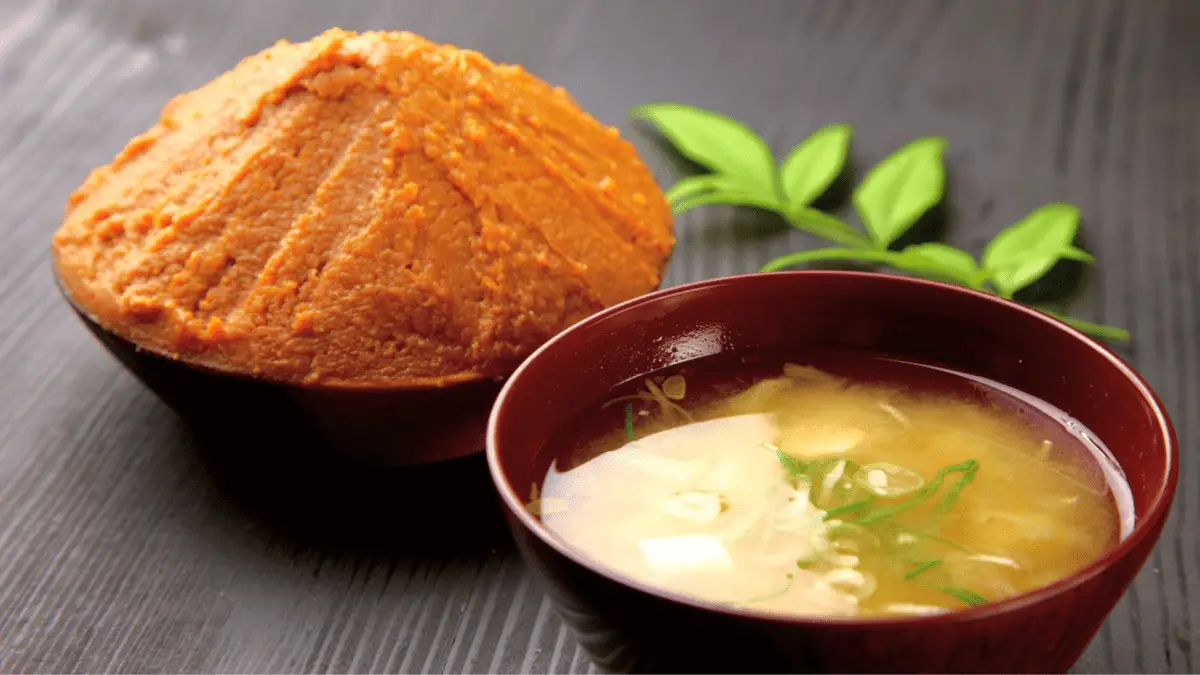

Check out our new cookbook
Bitemybun's family recipes with complete meal planner and recipe guide.
Try it out for free with Kindle Unlimited:
Read for freeIn this post we'll cover:
- 1 Miso: top 12 best recipes
- 1.1 Miso marinade
- 1.2 Miso Ginger Dressing
- 1.3 Miso shrimp yakitori
- 1.4 Vegan Miso soup
- 1.5 Miso nikomi udon recipe
- 1.6 Easy Instant Miso soup breakfast with white rice & furikake
- 1.7 Miso glazed salmon recipe
- 1.8 Sinigang na Lapu-Lapu sa Miso (miso fish soup)
- 1.9 Gluten-free Vegan Okonomiyaki Recipe
- 1.10 Yaki onigiri recipe: Perfect Japanese grilled rice ball
- 1.11 Vegan ramen noodle soup
- 1.12 Miso ice cream
- 2 11 Best miso recipes to try
- 3 Why cook with miso paste?
- 4 Conclusion
Miso: top 12 best recipes
Miso marinade
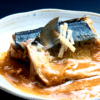
A delightful all-purpose condiment, miso marinade can be used to spruce up and improve your favorite dishes.
It requires few ingredients, is simple to prepare, and has exquisite flavor.
Japanese rice wine, mirin, miso soybean paste, and brown sugar are the main ingredients in miso marinade.
In order to tenderize proteins before grilling or baking them, the ingredients are mixed to create a creamy but light sauce that can be used as a side dish or a dip.
The marinade has a vivid, distinctive flavor that predominates in “umami” and contains touches of sweetness and sourness.
We like to use white miso paste for this recipe because it has a somewhat mellow, sweet flavor with less sodium than the darker ones, which are saltier, and hence, more potent and pungent.
But ultimately, you can use any type of miso paste as long as you adjust the quantity to ensure your marinade doesn’t taste too pungent.
Use miso marinade as a salad dressing, a marinade for meat or fish, a base for soups, or even as an ingredient in desserts.
Miso Ginger Dressing

Let’s start by examining the components of this delectable salad dressing in order to fully appreciate all of its flavors.
Japanese spice paste called miso is created from fermented soybeans. It occurs in a variety of forms and can taste either sweet and nutty or salty and umami.
One of the most popular miso flavors is white. Usually fermented for a shorter amount of time, which gives it a milder, sweeter flavor ideal for salad dressing.
In this dish, the ginger gives a zesty, citric, and earthy flavor accent. Sesame seeds go particularly well with this because they bring out the sweet and nutty flavors of the dressing.
The taste is further complicated by the acidity of the vinegar and lime juice.
Last but not least, the honey adds additional sweetness to an already tasty mixture.
The miso ginger recipe is a good pairing for fish and seafood, romaine lettuce salads, cabbage, and steamed vegetables.
Miso shrimp yakitori
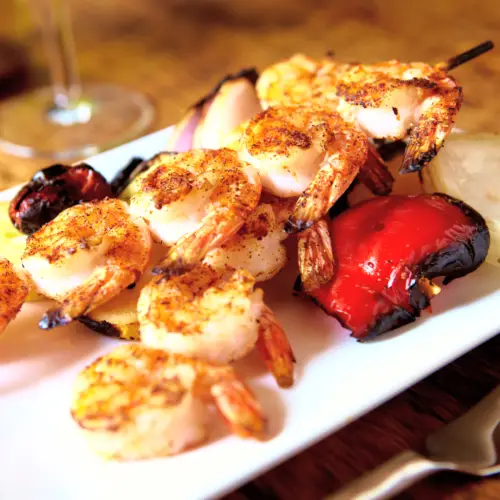
Glazed miso shrimp skewers are a popular dish at Japanese izakayas and yakiniku restaurants.
The special miso glaze used to top these delectable grilled skewers offers the ideal balance of sweet and salty ingredients.
The shrimp is ideal as a quick and simple evening dinner or for a casual gathering.
Sake, miso paste, and mirin tastes bring the shrimp yakitori recipe to life. This produces a delectable marinade that gives the shrimp more depth.
A konro grill or yakiniku grill is required for making traditional yakitori.
However, the shrimp can be grilled on any grill you have, so you don’t really need a Japanese tabletop grill, though it does provide for an interesting dining experience.
To avoid scorching, soak the bamboo skewers in water for 30 minutes before grilling.
Next, the glaze components should be combined, then boiled over medium heat. To thicken the glaze, simmer the sauce on low heat.
The shrimp should be marinated in the glaze for 15 minutes then threaded on skewers. Cook the shrimp for a couple of minutes on each side and add more glaze.
Vegan Miso soup

If you love miso soup and want to make it vegan, we have a super quick and easy recipe for you!
First, start off by making a vegan dashi broth by combining kombu, dried shiitake mushrooms and water.
After soaking for about 12 hours, you can use the dashi for the ramen soup. Boil ramen noodles, add mushrooms and miso paste.
The miso paste is the key ingredient to this vegan ramen soup because it adds a savory and salty umami taste.
Therefore, the ramen soup won’t taste bland even though it’s made with only a few ingredients.
To complete the vegan miso soup, add tofu cubes and top with green onions. The soup is a perfect light meal for lunch or dinner.
Miso nikomi udon recipe
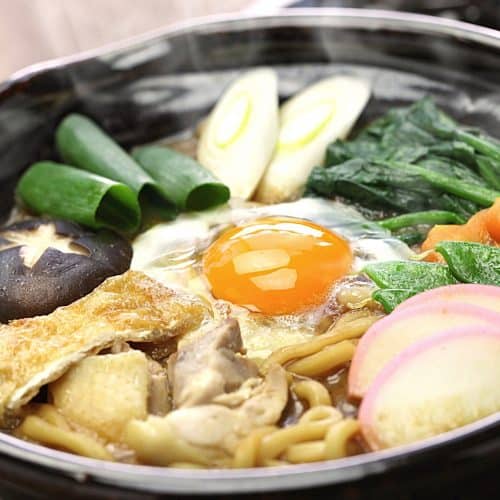
Miso nikomi udon is the way to go if you’re seeking for a delectable soup recipe that will warm you from the inside out.
The ingredients for miso nikomi udon include chicken, fish cakes, and udon noodles simmered in a miso-dashi broth.
Typically, Mame Miso, a 100% soybean miso, is used to make the soup.
The best miso to use in the soup is this kind because it won’t lose a lot of flavor when simmering.
Miso nikomi udon is a meaty, delicious dish that lends itself to numerous recipe iterations and modifications.
It is indigenous to Nagoya, Japan, where Hatcho miso is particularly well-liked.
If you check out the recipe, you’ll also find a vegetarian alternative miso udon soup there too so there’s something for everyone.
This type of miso nikomi soup is best served as a hot lunch or alongside a Japanese egg sandwich for a filling meal.
Easy Instant Miso soup breakfast with white rice & furikake

When you’re very short on time, you can make an easy miso soup to comfort your tummy using instant miso soup packets and a few extra ingredients like rice.
The base of miso soup, known as “dashi,” is a stock that has been combined with softened miso paste.
Depending on regional and seasonal cuisines, as well as individual preferences, several ingredients are added.
And it’s much simpler if you use a packet of instant miso soup with some rice. I added a tiny bit of furikake to it to add a bit more flavor.
The instant miso soup packet gives the soup that classic umami taste because it’s made with red and white miso paste.
Then you can add your choice of rice or noodles and some furikake spice and spring onion.
Miso glazed salmon recipe

Salmon that has been oven-broiled after marinating in a delicious concoction of miso, soy, and sake. Sounds scrumptious, no?
This quick and simple meal is perfect if you enjoy Japanese flavors. To make this recipe, you just need a few simple ingredients and fresh salmon fillets.
It’s ideal for a quick weeknight meal and goes well with flavorful jasmine rice or grilled vegetables.
The key flavoring ingredient in this recipe is the miso marinade. You should marinate the salmon for about 30 to 60 minutes until it absorbs the savory flavor.
To make the marinade, start by mixing white miso paste, sake, mirin, soy sauce, peanut butter and sesame oil.
Then broil the salmon in the oven on medium heat for about 12 or so minutes until it has a crispy browned skin.
Sinigang na Lapu-Lapu sa Miso (miso fish soup)
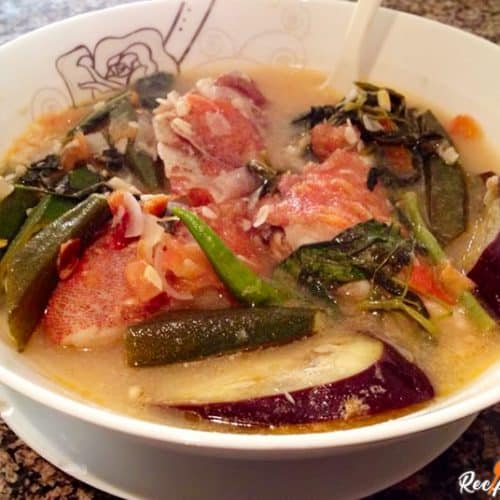
It’s not just the Japanese who have delicious miso-based recipes. This Filipino miso fish soup is flavorful and full of umami.
Sinigang na Lapu-Lapu is a Filipino soup dish that is usually cooked with tamarind and miso paste to give it a tangy and umami flavor.
The fish used in the soup is usually Lapu-Lapu, a type of grouper that’s very popular in the Philippines.
This Sinigang na Lapu-Lapu sa Miso Recipe uses Lapu-Lapu as the main ingredient, miso as a brothing agent, water, and salt to give it a unique flavor.
To begin, bring a saucepan of water to a boil before adding the tamarind.
The tamarind can either be boiled for thirty minutes to make it soft before being crushed and juiced, or it can be started being crushed in a sieve or small bowl while being crushed with water from the saucepan.
Then add the fish and vegetables and boil.
This soup is best served with some patis (fish sauce) for an even fishier flavor.
Gluten-free Vegan Okonomiyaki Recipe

If you’re already a fan of the Japanese okonomiyaki savory pancake, you’ll enjoy this guilt-free vegan version.
This gluten-free vegan okonomiyaki recipe is made with a batter of cassava flour, miso paste, and cabbage.
Then you can add additional ingredients like chia seeds, flax seeds and some smoked tofu to amp up the flavor.
This vegan okonomiyaki is surprisingly easy to make and great for those on a special diet. It’s also the perfect way to make a healthy snack or meal.
To make the vegan okonomiyaki, simply whisk together the ingredients and start frying the batter in a frying pan. Add the smoked tofu and some toppings of your choice.
This snack is best served with a drizzle of gluten-free vegan okonomiyaki sauce and some fresh spring onions. Enjoy!
For more delicious okonomiyaki dishes, check my complete round-up of the best okonomiyaki recipes
Yaki onigiri recipe: Perfect Japanese grilled rice ball
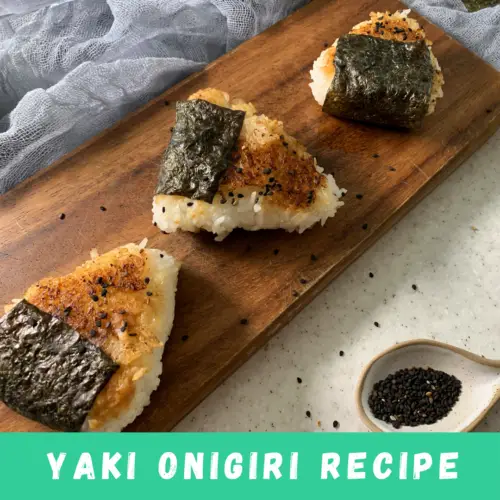
Yaki Onigiri are best made with sticky rice; if you use any old rice from your cupboard, they won’t maintain their shape and texture and may crumble while being grilled or fried.
Combine a bit of miso paste, soy sauce, and one teaspoon of water in a small bowl.
Then, scoop a handful of cooked sticky rice into your hand while moistening your hands to prevent the rice from sticking.
Make a large round or oval ball out of the rice. A ball is the simplest shape to build, especially for beginners.
However, you can make whatever shape you like, including triangles.
Each rice ball should be brushed with soy and miso sauce. The onigiri should be thoroughly browned and cooked after grilling them for around 7 minutes on one side.
The diluted miso paste is what makes the rice go from bland to tasty.
Vegan ramen noodle soup

There are so many versions of ramen soup in Asia it’s extremely hard to pick one. But if you’re vegan, this hearty vegan ramen noodle soup is the recipe to try.
This vegan ramen noodle soup recipe is made with a vegetable broth and seasoned with miso paste.
The noodles are cooked al dente, vegetables like shiitake mushrooms and spinach can be added and then tofu adds a nice texture to the soup.
Miso paste and soy sauce are used to give the soup a ton of flavor.
But if you want to make this soup even more filling, you can add even more veggies like bok choy, cabbage, snap peas and even kale.
Serve the soup with a sprinkle of chilli flakes for an extra kick, or some sesame seeds and scallions for added texture.
Miso ice cream

Japanese miso ice cream is a distinctive and delectable flavor that is rising in popularity. It has a flavor unlike any other ice cream—sweet, salty, and nutty.
This ice cream flavor, according to those who have tried it, has a taste that is described as a cross between caramel, miso soup, and a dash of soy sauce.
This miso-flavored delight can be served as a snack or as a topping for dessert, unlike sweet ice cream.
Additionally, it can have both sweet and salty garnishes on top. But you can serve it in a cone like regular sweet ice cream or gelato.
In fact, Japanese people like to eat the miso ice cream from a cone.
If your favorite ice cream shop doesn’t carry this flavor, you can create it at home yourself! You’ll need an ice cream maker, miso paste, whipping cream, sugar, milk, honey and salt.
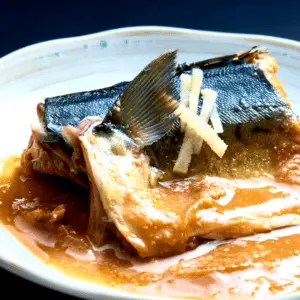
11 Best miso recipes to try
Ingredients
- 2 cups shiro miso paste (white miso paste)
- 1/2 cup light brown sugar
- 1/2 cup sake
- 1/2 cup mirin
Instructions
- Gather up all the ingredients
- Add all the ingredients to a saucepan on low heat and whisk them for about 5-10 minutes or until the sugar crystals are completely dissolved.
- Remove the pan from the heat, and let it cool to room temperature before using.
- Enjoy by glazing it on your favorite fillets, siding it with your favorite veggies, and as a marinade for your favorite protein dishes.
Why cook with miso paste?
Miso paste is a fermented soybean paste with a unique umami flavor. It’s used widely in Japanese cooking and is packed with nutrition.
Since it’s a healthy ingredient, it can be used to make a variety of dishes.
From miso marinated grilled meats to miso soup and even sauces, miso paste is a versatile ingredient that can enhance the flavor of almost any dish.
It adds a saltiness and a bit of pungent flavor that’s unique to miso paste. Its umami flavor is something that many Westerners crave.
LuLuckilyckiyl, miso paste is easy to find in most Asian markets and comes in three varieties: white, red and yellow.
Depending on the dish you’re making, pick the right variety of miso paste for the best flavor.
The white is the mildest type of miso paste, whereas the red and yellow varieties are more robust and pungent in flavor.
Also read: Can I use red or brown instead of white miso paste?
Conclusion
Miso paste is an incredibly versatile ingredient that can be used to make unique and delicious dishes.
From classic miso soup to marinades for Japanese BBQ and you can even add it to your favorite salad dressing.
Meat lovers and vegans alike enjoy the savory flavor of this fermented soybean paste.
Whether you are looking to make a quick weeknight dinner, or an impressive dish for your next gathering, miso paste is the secret ingredient to elevate any meal.
We hope you enjoyed our recipe roundup with the best miso recipes we have on the site.
Looking for quality miso paste? Find the Best Miso Paste Brands Reviewed here
Check out our new cookbook
Bitemybun's family recipes with complete meal planner and recipe guide.
Try it out for free with Kindle Unlimited:
Read for freeJoost Nusselder, the founder of Bite My Bun is a content marketer, dad and loves trying out new food with Japanese food at the heart of his passion, and together with his team he's been creating in-depth blog articles since 2016 to help loyal readers with recipes and cooking tips.
